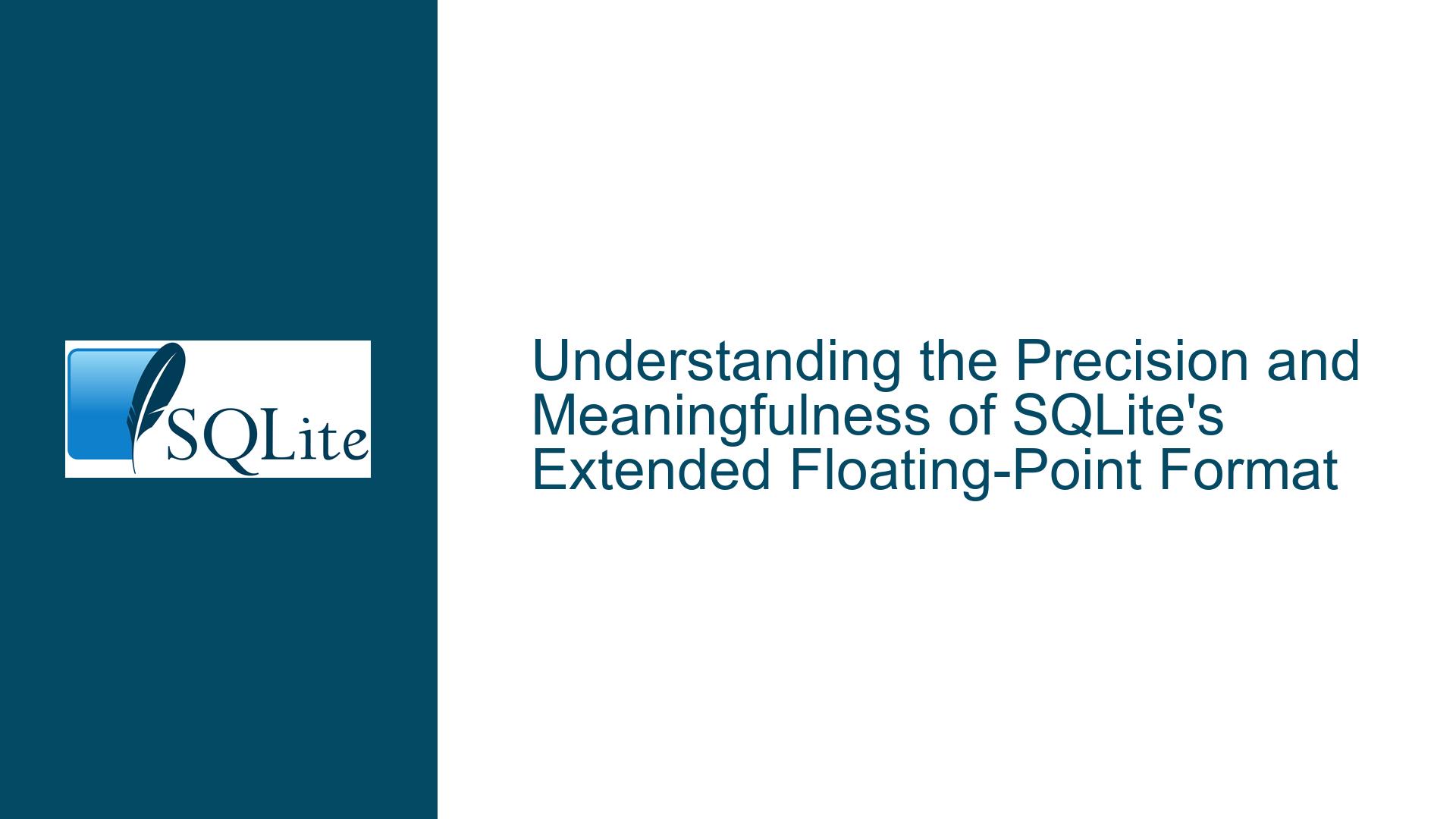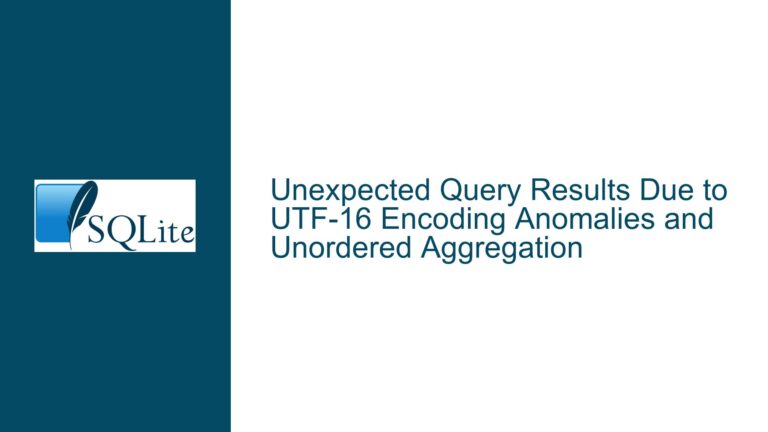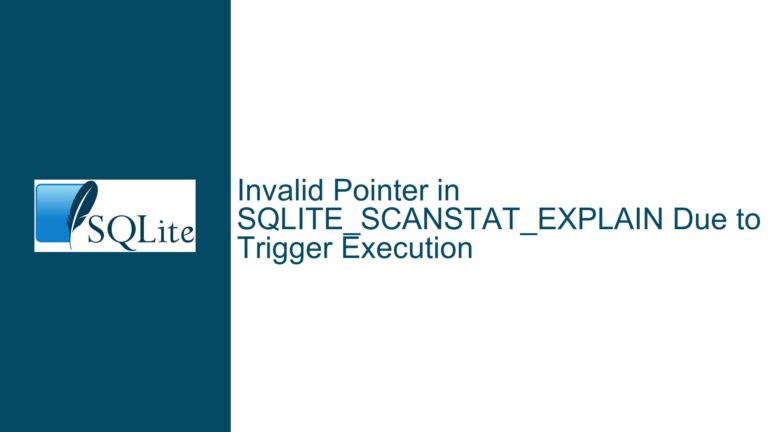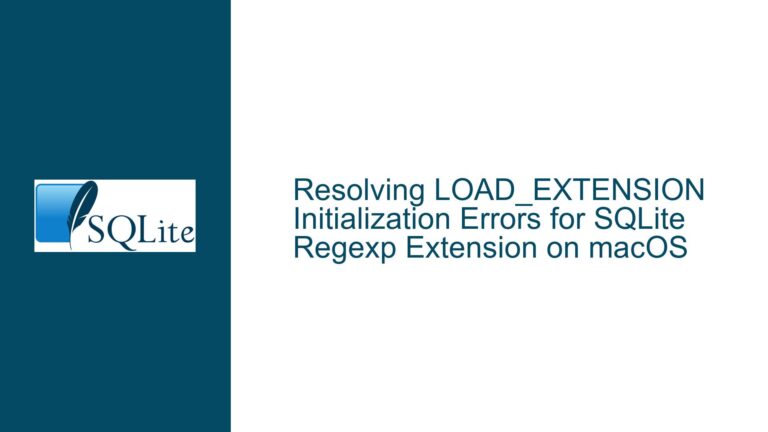the Precision and Meaningfulness of SQLite’s Extended Floating-Point Format
The Role of Extended Precision in SQLite’s Floating-Point Representation
SQLite, like many other database systems, supports the storage and manipulation of floating-point numbers using the IEEE 754-2008 64-bit floating-point format, commonly referred to as double in C. This format provides approximately 15 to 17 significant decimal digits of precision. However, SQLite also offers an extended precision format through its printf function, which can display up to 26 significant digits. This extended precision format, known as the "alternate-form-2" flag, raises questions about its meaningfulness and utility, especially given that the underlying storage format (double) cannot natively support such precision.
The extended precision format is not derived from the long double type, which is often available in C and can provide higher precision than double. Instead, SQLite’s extended precision is a result of additional algorithmic processing within the printf function. This processing allows SQLite to generate more digits than the native double type can represent, but the meaningfulness of these extra digits is questionable. They do not correspond to additional precision in the stored value but are instead a byproduct of the conversion algorithm.
The Divergence Between Displayed and Stored Precision
When examining the output of SQLite’s extended precision format, it becomes clear that the extra digits do not align with the actual precision of the stored double value. For example, consider the value 1.2345678901234567e+04. When formatted using SQLite’s extended precision, the output might look like 1.2345678901234567092972532e+04. However, the native double representation of this value is 1.2345678901234567092615180e+04, and the long double representation is 1.2345678901234567000244624e+04. The divergence in the digits beyond the 16th significant figure indicates that the extended precision digits are not directly tied to the stored value’s precision.
This divergence is not random but is a result of the IEEE 754 floating-point resolution. The extra digits are a consequence of how the real value maps onto the available floating-point representation. While long double offers higher resolution and is closer to the real value, SQLite’s extended precision format does not match either double or long double. Instead, it provides a representation that is closer to double but includes additional digits that are not meaningful in terms of the stored value’s precision.
Troubleshooting and Fixing Precision Issues in SQLite
To address the issues surrounding SQLite’s extended precision format, several steps can be taken. First, it is important to recognize that the extra digits provided by the extended precision format do not add meaningful precision to the stored value. They are a result of the conversion algorithm and should not be relied upon for accurate representation of the value.
One approach to improving the accuracy of floating-point conversions in SQLite is to modify the printf function to use long double constants. This change ensures that the conversion algorithm operates with higher precision, reducing the likelihood of errors in the conversion process. For example, replacing double constants like 1.0 with long double constants like 1.0L can improve the accuracy of the conversion. This modification has been shown to reduce errors in the conversion process, particularly when dealing with very small or very large numbers.
Another approach is to adjust the normalization process within the printf function. By normalizing the floating-point value to a range between 1.0 and 10.0, the function can more accurately represent the value with the desired number of significant digits. This normalization process involves scaling the value by powers of 10 and adjusting the exponent accordingly. By ensuring that the normalization process uses long double arithmetic, the accuracy of the conversion can be further improved.
In cases where long double support is not available, such as on platforms where long double is treated as double, additional modifications may be necessary. For example, the AtoF function, which converts ASCII text to floating-point values, can be adjusted to handle the conversion more accurately. This might involve using a more precise algorithm for the conversion or adding additional checks to ensure that the converted value matches the original value as closely as possible.
Finally, it is important to test the changes thoroughly to ensure that they do not introduce new issues. This can be done by generating a large number of random floating-point values and verifying that they can be accurately converted to text and back to floating-point values without loss of precision. By running these tests on different platforms and with different compilers, it is possible to identify and address any platform-specific issues that may arise.
In conclusion, while SQLite’s extended precision format provides additional digits in the output, these digits are not meaningful in terms of the stored value’s precision. By modifying the printf function to use long double constants and adjusting the normalization process, it is possible to improve the accuracy of floating-point conversions in SQLite. However, it is important to recognize the limitations of the underlying storage format and to use the extended precision format with caution.






